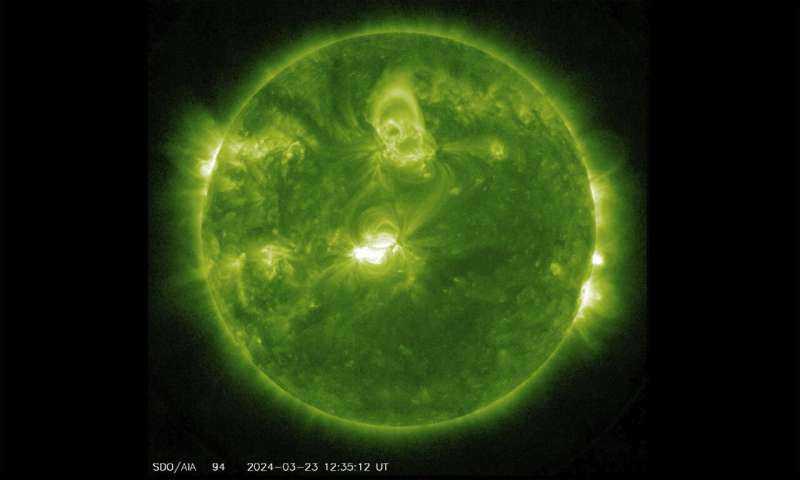This article has been reviewed according to Science X's editorial process and policies. Editors have highlighted the following attributes while ensuring the content's credibility:
fact-checked
reputable news agency
proofread
Geomagnetic storm from a solar flare could disrupt radio communications and create a striking aurora

Space weather forecasters have issued a geomagnetic storm watch through Monday, saying an ouburst of plasma from a solar flare could interfere with radio transmissions on Earth. It could also make for great aurora viewing.
There's no reason for the public to be concerned, according to the alert issued Saturday by NOAA's Space Weather Prediction Center in Boulder, Colorado.
The storm could interrupt high-frequency radio transmissions, such as by aircraft trying to communicate with distant traffic control towers. Most commercial aircraft can use satellite transmission as backup, said Jonathan Lash, a forecaster at the center.
Satellite operators might have trouble tracking their spacecraft, and power grids could also see some "induced current" in their lines, though nothing they can't handle, he said.
"For the general public, if you have clear skies at night and you are at higher latitudes, this would be a great opportunity to see the skies light up," Lash said.
Every 11 years, the sun's magnetic field flips, meaning its north and south poles switch positions. Solar activity changes during that cycle, and it's now near its most active, called the solar maximum.
During such times, geomagnetic storms of the type that arrived Sunday can hit Earth a few times a year, Lash said. During solar minimum, a few years may pass between storms.
In December, the biggest solar flare in years disrupted radio communications.
© 2024 The Associated Press. All rights reserved. This material may not be published, broadcast, rewritten or redistributed without permission.





















